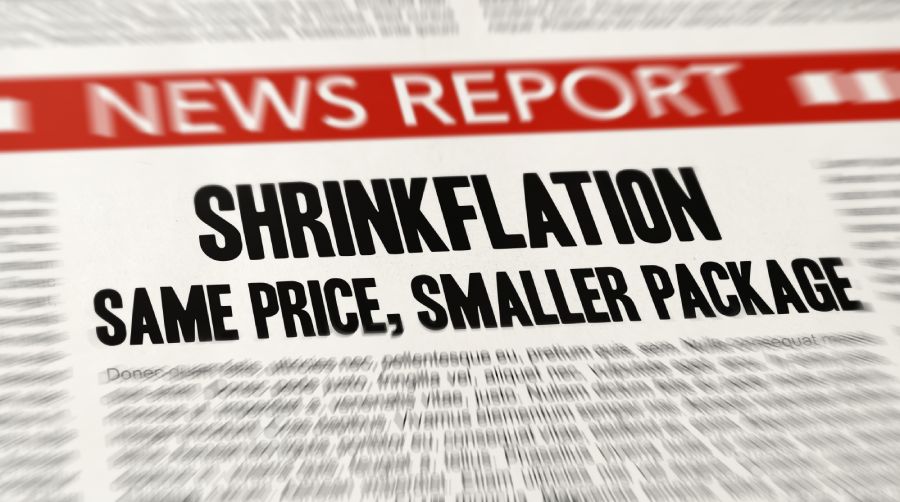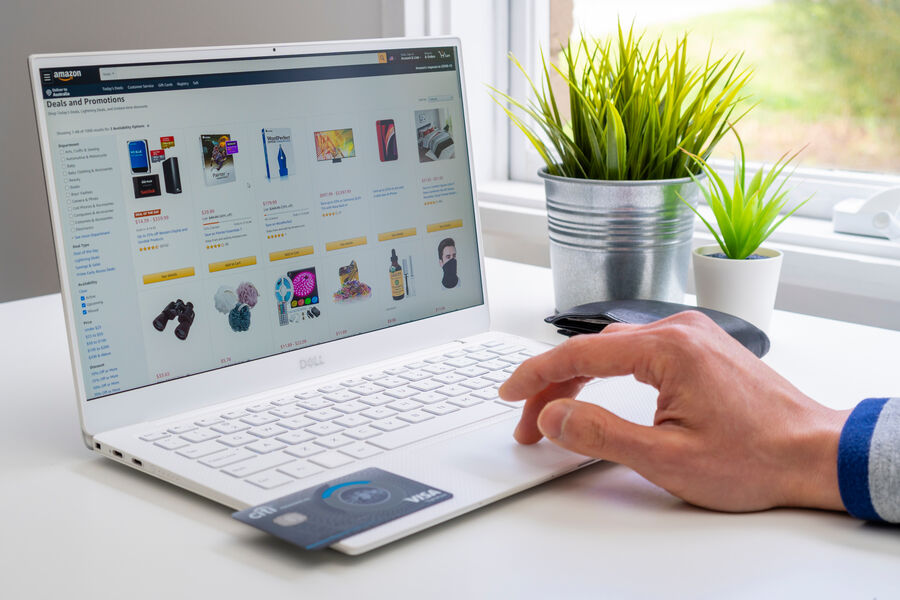
Shrinkflation is the process of companies shrinking the size or quantity of products while maintaining the same product prices. This results in financial savings for the company producing the goods, but it can also make consumers feel frustrated or cheated. Shrinkflation is caused by rising production costs that lead retailers to find ways to save money, without directly increasing prices.
Key Takeaways:
- Shrinkflation happens when product prices remain the same, but the products become smaller in size or quantity. Consumers end up getting less product per dollar.
- Rising production or manufacturing costs and market competition are main causes of shrinkflation.
- Shrinkflation is one way businesses respond to rising costs; they can also pass costs onto consumers via higher product prices or make cuts in other areas of the business to absorb the costs.
Shrinkflation is primarily caused by rising production costs for manufacturing goods. This is often part of the large economic reality of inflation—or the general increase in prices in an economy over time. Inflation has a multitude of effects on retailers, such as changed spending habits among consumers, adjustments in hiring practices, and rising overhead or operating costs.
In March 2024, President Joe Biden called out the issue of shrinkflation in the US. However, an economist from the Cato Institute pointed out that the alternative would have been for businesses to raise their list prices, which would likely have upset consumers even more. The president has called for a bill that would support anti-shrinkflation regulations.
Every time a manufacturer creates products to be sold to a retailer, this incurs various costs, both fixed and variable. Variable costs increase whenever production ramps up or the cost of materials increases. For example, utility expenses like electricity and water consumption go up when a manufacturer begins producing goods more quickly or in greater numbers. Or, if the cost of ingredients such as sugar or salt goes up, then producing the same amount of food becomes more expensive.
Manufacturers will likely pass these increased costs onto the retailers that order products. Retailers, then, will want to pass these costs onto consumers—and shrinkflation is one way to do this without the consumers necessarily noticing it.
Shrinkflation as a Response to Economic Conditions
In the face of increasing production costs, a business may choose to raise its prices, effectively passing increased costs onto customers. While this saves the business from carrying the burden of the costs and makes it easier to stick to its budget, it also risks upsetting customers who are used to lower prices.
Retailers also have the option to make their products smaller or less in quantity while keeping prices steady. This means fewer raw materials and less labor go into each item, making them cheaper to produce. This way, even if the business does not raise its own prices, it will alleviate the burden of higher production costs. This is shrinkflation.
Customers are also less likely to notice smaller products than higher prices. This is where market competition begins to play a role in the prevalence of shrinkflation. If a business needs to mitigate rising production costs but still look attractive next to competitors, they might opt for shrinkflation—subtly preserving consumer goodwill and trust. Meanwhile, competitors who have chosen to increase prices will seem undesirable in comparison.
As long as prices remain the same, customers may not even notice if products become smaller. (Source: Unsplash)
Consumers are also likely to continue to buy necessities such as groceries despite price increases or shrinkflation practices. So, businesses that sell such products may be able to raise prices or decrease product size without necessarily losing sales.
Brand loyalty also leads to the same effect: if consumers consistently buy from the same brand, they are likely to continue doing so even if the products become slightly smaller. They may do this due to a sense of familiarity, personal preference, or lack of similar trust in other brands.
A business might choose to be upfront with customers about increasing costs or reducing product sizes and quantities. One way to do this is to survey customers and ask whether they’d be more willing to accept higher prices or smaller product sizes. Making this kind of decision wisely is one example of good store management.
Is shrinkflation legal? Technically, shrinkflation is legal—though companies need to accurately label their products. However, it may not be legal for long. The federal government is pushing legislation that essentially seeks to prevent shrinkflation.
Examples of Shrinkflation
Shrinkflation has happened many times in recent years, with common products being necessities such as food items and household items like cleaning supplies and hygiene products. In most cases, brands were not very upfront about their reasons for doing this.
- In 2021, several supermarket brands in the UK reduced the number of products per pack. Walkers reduced its 24-bag multi-pack of chips to 22 bags while retaining the same price. Similarly, Smith’s Frazzles and Chipsticks snacks went down from eight bags per pack to six.
- German laundry detergent brand Persil reduced the amount of washing powder per box by 75 grams. British grocery brand Tesco also reduced the weight of its mozzarella cheese pack by 30 grams.
- In 2022, Unilever brand Dove reduced the weight of its soap bars from 100 grams to 90 grams. A Dove spokesperson mentioned rising costs for raw materials, which is an example of a company being upfront about its reasons for reducing product sizes. Although, “to bring [the soap bar] in line with other markets” was another reason given for the change.
- In 2021, American food manufacturer General Mills reduced the weight of its family-sized cereal boxes from 19.3 ounces down to 18.1 ounces.
- In 2022, Procter & Gamble brand Charmin reduced the number of sheets in its two-ply toilet paper products, from 264 to 244. A consumer advocate noted that this “amounts to losing the equivalent of about a roll and a half in the new 18-count package.”
- In 2023, cat food brand Whiskas (owned by American company Mars, Inc.) reduced the weight of its cat food packages from 100 grams to 85 grams.
Pros & Cons of Shrinkflation
For Businesses
Pros:
- Maintained or increased profits: A business may choose to engage in shrinkflation practices to maintain or even increase profits despite higher production costs. If the business sells necessities or has high market power—or if the customer base is highly loyal to the brand—then the business may be able to do this with impunity. However, this is less likely to succeed for a newer business.
- Maintained or enhanced reputation: If a business is able to maintain its retail prices (even as it reduces product sizes), this will make its products more attractive to shoppers. This is especially true on retail shelves, where its products will appear next to competing items with higher prices.
Cons:
- Loss of customers’ business: If customers discover that the business is engaging in shrinkflation, they may choose to get what they want elsewhere. This is especially likely if affordable competing brands exist.
For Consumers
Pros:
- Product prices will not increase: Even if consumers buy from a business that engages in shrinkflation practices, then they will at least not have to deal with higher prices. For buyers for whom price is the biggest concern, this can be a good arrangement. It is also favorable for consumers who want to remain loyal to certain brands.
Cons:
- Less product for the same price: Even if consumers end up paying the same price, they’ll be getting less product in exchange, ultimately getting a worse deal than before.
- Feeling of deception or betrayal: Companies that engage in shrinkflation practices may not be forthcoming about doing so, so it may come across as sneaky or deceptive. This is likely to make consumers feel deceived or betrayed.
Shrinkflation Frequently Asked Questions (FAQ)
Click through the sections below to learn more about shrinkflation, as well as its causes and possible responses from companies and buyers.
Shrinkflation is when product prices remain the same, but the size or amount is reduced. Buyers end up getting less product per dollar that they pay, leading to a net loss for consumers. Buyers may not even be aware that the products they buy are smaller than they used to be.
The main cause is increasing production costs (such as raw materials or labor) for manufacturing goods. Manufacturers may decide to pass these costs onto retailers who place purchase orders; retailers may then choose to pass them onto consumers. This is done via shrinkflation, if not by directly increasing retail prices.
If a retailer decides to reduce the sizes of its products while keeping prices the same, it can choose to be upfront with customers about doing so. If customers appreciate the honesty and transparency, they may choose to stay with the brand despite the reduced sizes. Otherwise, consumers may choose to turn to alternative brands that sell similar products.
Bottom Line
The economic factors that lead to rising costs (and therefore to shrinkflation) aren’t necessarily something that either retailers or consumers can control. But both parties can take steps to maintain trust in the seller-buyer relationship or at least find alternative options if the current arrangement is no longer serving their needs.





